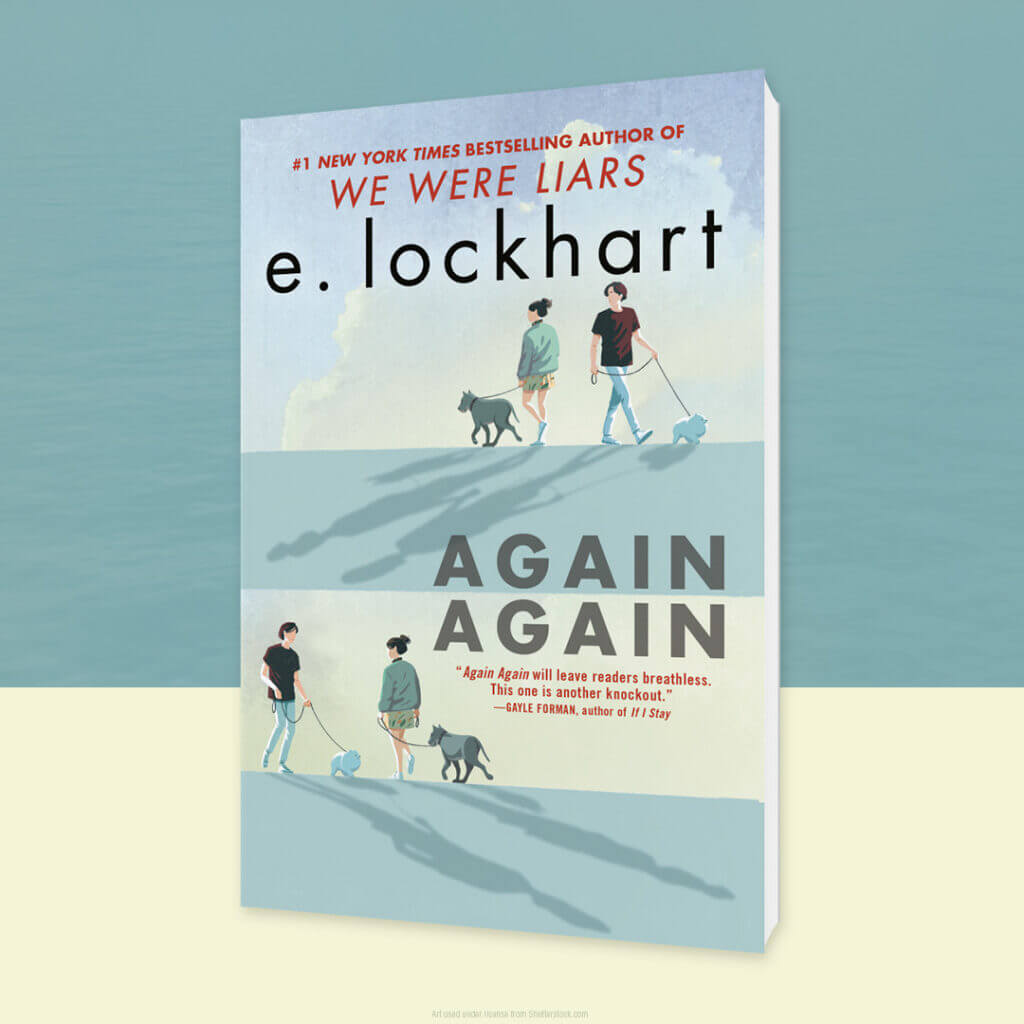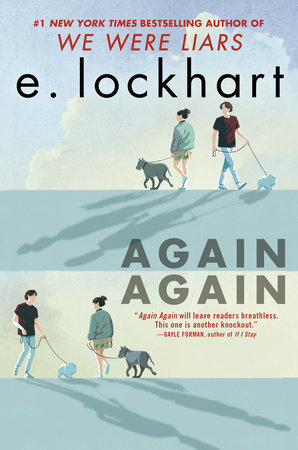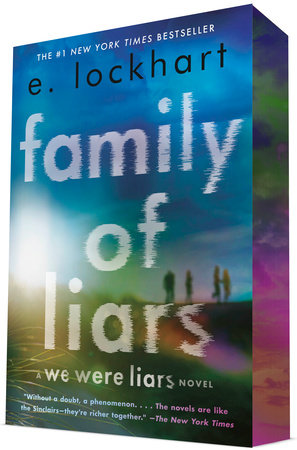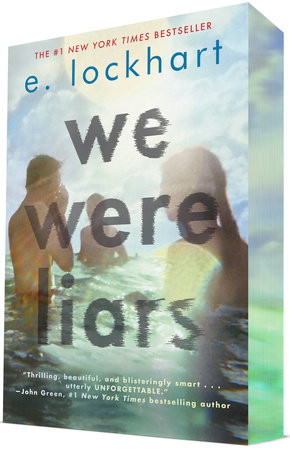
One of our favorite Book Nerd activities is going to book club! Book clubs create community, help us get through our TBR pile, discover new faves, and allow space to talk about our favorite characters. To help with your book club endeavors, we’ve created book club guides for some of our favorite YA titles. This book club guide will help you get the most out of New York Times bestseller E. Lockhart’s Again Again.
If you’re looking for other book club articles, check out 10 Easy Steps to Hosting a Virtual Book Club and don’t forget to tag @getunderlined whenever your book club meets!
Again Again Book Club Guide | Discussion Questions
1. One of the topics Lockhart explores is identity. Look at the scene between Toby and Adelaide in chapter 20. What is Toby saying about his identity? Do you agree? Next, have a look chapter 15, where Adelaide has a new piece of identification made. What do you consider the markers of your own identity? What defines others’ identities? Does the way others view you influence the way you view yourself ? Why or why not?
2. Here’s an essay in the Los Angeles Times Lockhart wrote about a turning point in her own life. Have there been any turning points in your life? In Again Again, do you see any turning points for Adelaide?
3. Addiction is overtly explored in this novel, since Toby is a recovering addict. How else is addiction explored? What might Adelaide be addicted to? What are some other things people become addicted to besides drugs? Behaviors? Foods? Feelings? Other people?
4. Lockhart splits lines, making some of the prose look like poetry. But is it? You might work with this definition: “Poetry is a type of literature based on the interplay of words and rhythm. . . . In poetry, words are strung together to form sounds, images, and ideas that might be too complex or abstract to describe directly.” literaryterms.net/poetry/. Using that definition, is anything in Again Again a poem? Why or why not? Some pages to consider: the description of Toby on page 25; the description of Adelaide weeping on pages 51–52; the work of art described on pages 123–124; Toby’s texts on pages 167–168 and Adelaide’s speech on pages 220–223. What happens if we analyze one or more of these passages as we do poetry? If the talk about poetry is productive, consider reading Jason Reynolds’s Long Way Down, Kwame Alexander’s The Crossover, and Elizabeth Acevedo’s The Poet X, all excellent young adult novels-in-verse.
5. Look at the conversation between Adelaide and Mikey Double L on pages 80–82. It is out of chronological order. What effect does that choice have on the meaning of the scene? How does that out-of-order conversation connect to other themes you see in the novel?
6. On pages 104–105, Kaspian-Lee discusses her definition of beauty, which is different from Adelaide’s. What are some ways we might define beauty? Are any of those definitions problematic? Are any of them culturally determined? Do you think there is a relationship between beauty and tragedy, as Kaspian-Lee asserts? Why or why not?
7. Adelaide projects fantasies onto Jack that are linked to his disability, and Jack rejects those at several points in the novel. What are those fantasies? Why does Jack reject them? See pages 177–178. The opening chapter of Ronald J. Berger’s Introducing Disability Studies is a good introduction to conversations disability, and it is available online: rienner.com/uploads/50b7cb7fb3c4d.pdf. After reading it, you might return to the question of identity, this time in relation to Jack. How does he see himself ? Is it different from how the world sees him?
8. Adelaide sets boundaries with Toby at a number of points in the novel. Have a look at chapter 14. What are boundaries? How do they affect relationships? Are there times when boundaries are problematic? What are some examples of you setting boundaries in your own life? Have you ever had difficulty setting a boundary? What are some tools we can use to set boundaries with people?
9. On pages 214–216 we see Adelaide’s design for Fool for Love in multiple universes. What do these designs tell us about the play, even if we haven’t read it? What do these designs suggest Adelaide thinks about love? The materials in this guide are based on the Educators’ Guide prepared by the author E. Lockhart, who holds a PhD in English and comparative literature from Columbia University.
Check out Again Again
Check out other bestsellers from E. Lockhart
Did you like this Again Again book club guide? Get social with us at @getunderlined!





